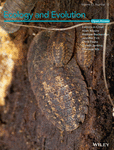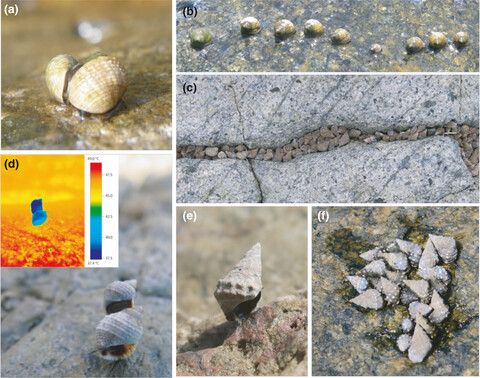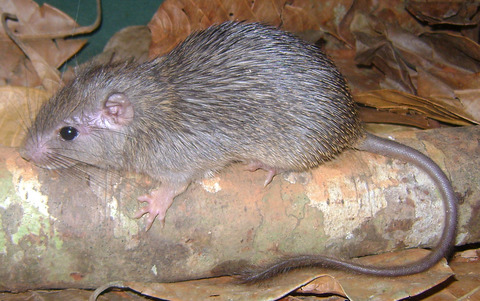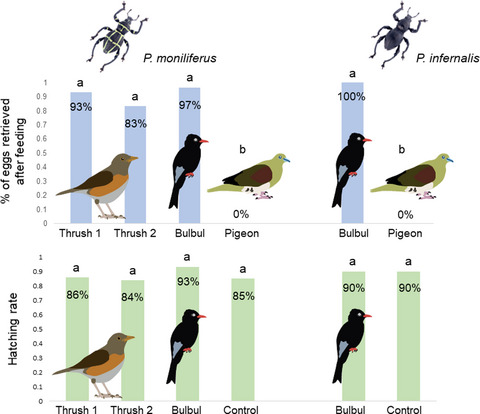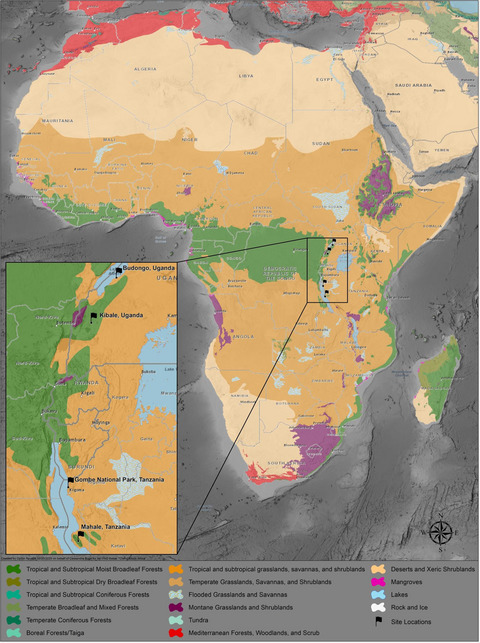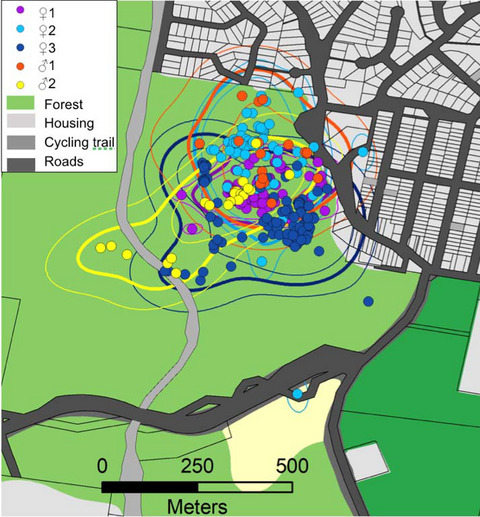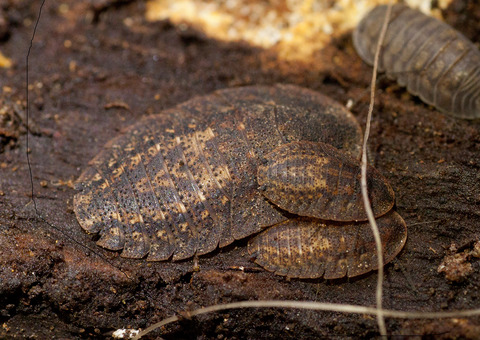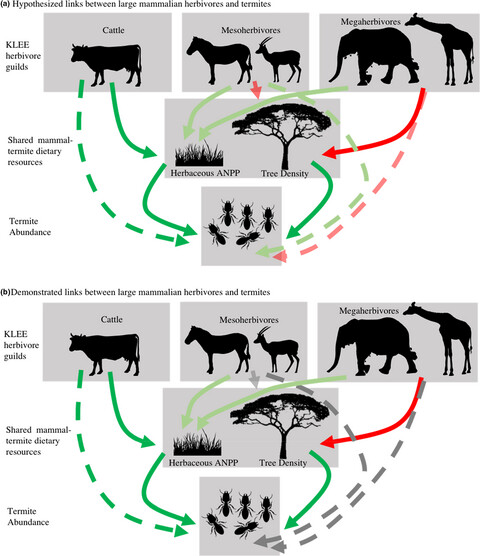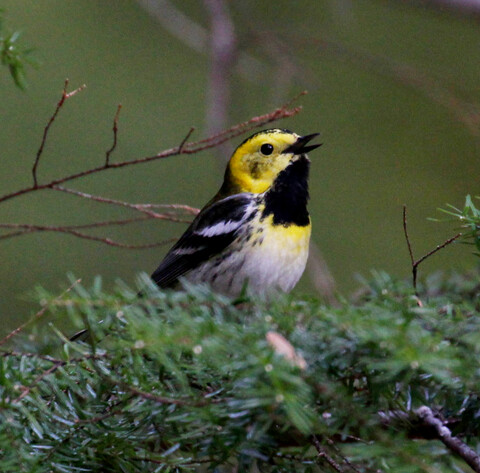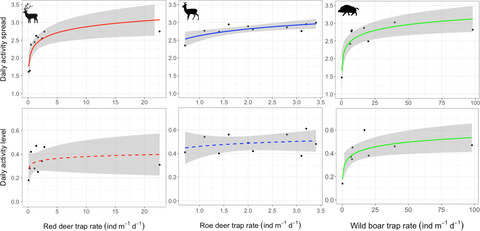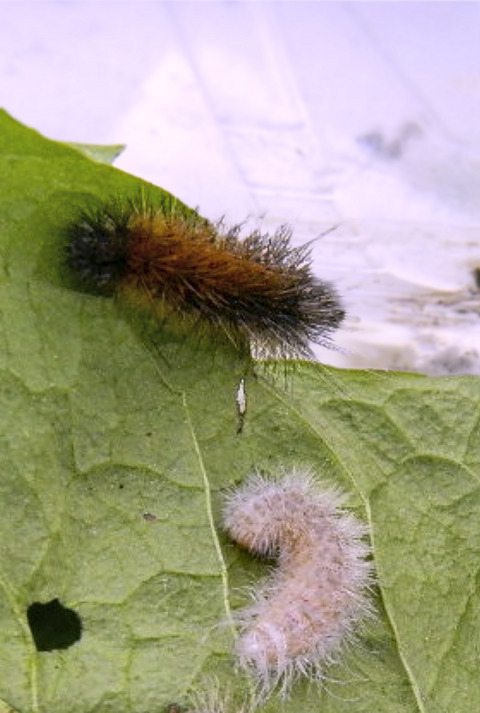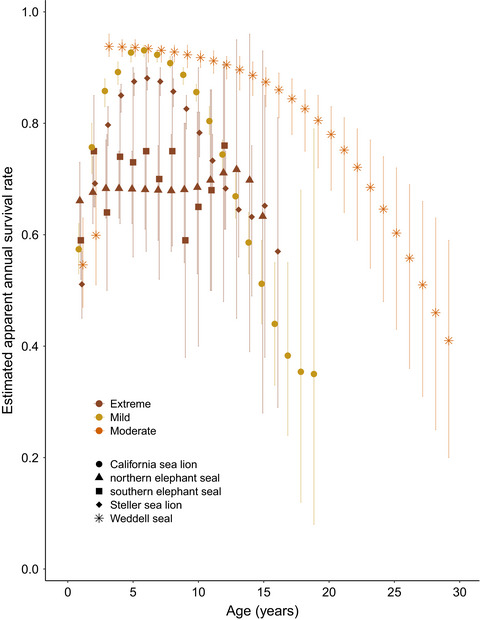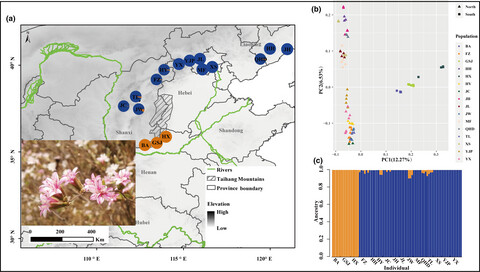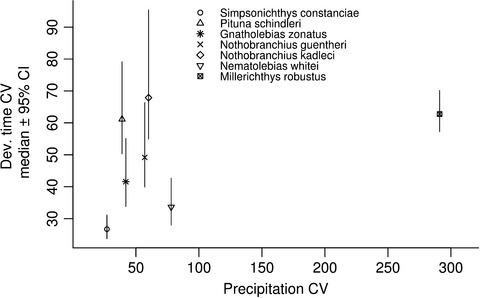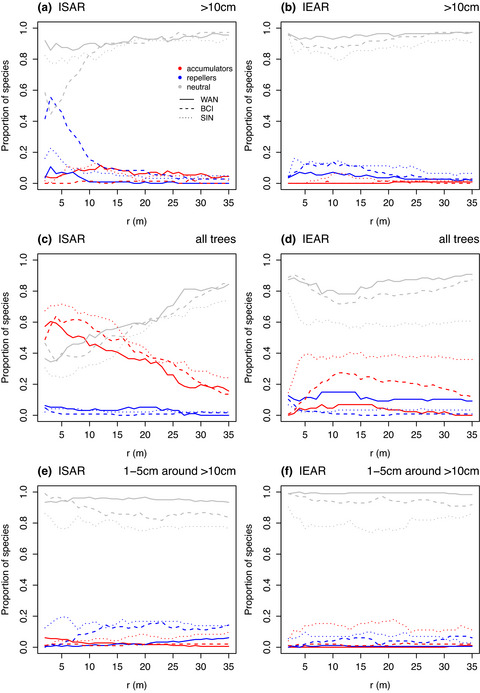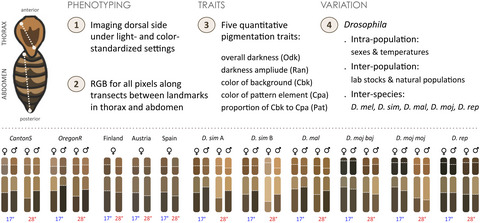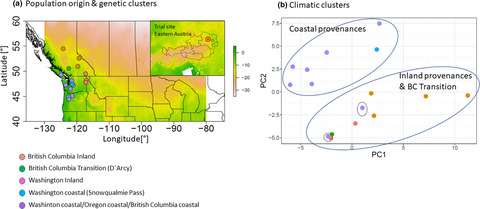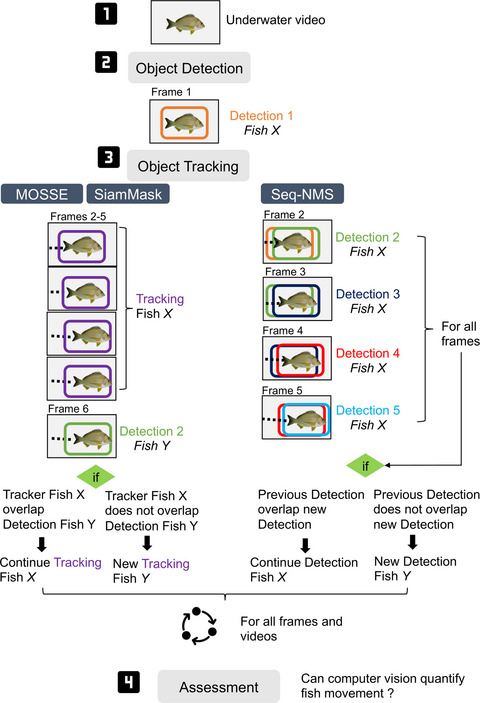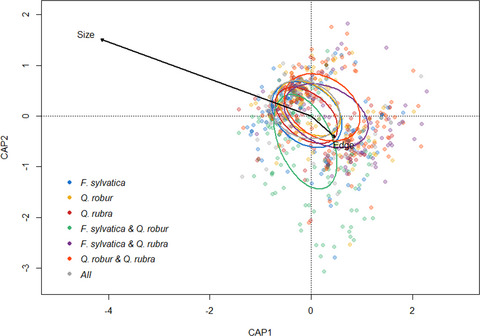Journal list menu
Export Citations
Download PDFs
ISSUE INFORMATION
NATURE NOTES
The diel activity pattern of mountain hare (Lepus timidus) on managed heather moorland in Scotland
- Pages: 7106-7113
- First Published: 01 May 2021
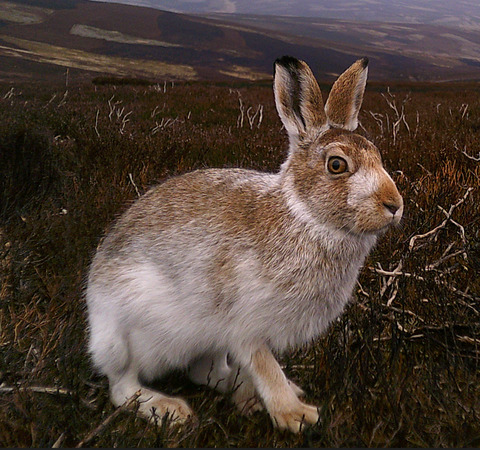
Mountain hare activity in the south of Scotland during autumn and winter was crepuscular with greater activity at dusk than at dawn. Daylight activity was relatively low and night activity showed an episodic pattern. In spring and summer, peaks of crepuscular activity remained evident but daylight activity was much more prevalent, and night activity was lower.
Behavioral repertoire of high-shore littorinid snails reveals novel adaptations to an extreme environment
- Pages: 7114-7124
- First Published: 02 May 2021
New karyotype for Mesomys stimulax (Rodentia, Echimyidae) from the Brazilian Amazon: A case for species complex?
- Pages: 7125-7131
- First Published: 08 May 2021
Eggs survive through avian guts—A possible mechanism for transoceanic dispersal of flightless weevils
- Pages: 7132-7137
- First Published: 03 May 2021
Prey preferences of the chimpanzee (Pan troglodytes)
- Pages: 7138-7146
- First Published: 04 May 2021
Large area used by squirrel gliders in an urban area, uncovered using GPS telemetry
- Pages: 7147-7153
- First Published: 19 May 2021
Woodpeckers can act as dispersal vectors for fungi, plants, and microorganisms
- Pages: 7154-7163
- First Published: 13 May 2021
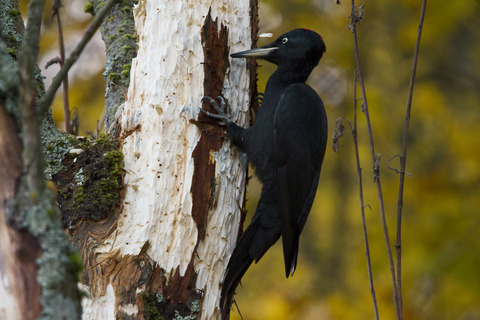
Woodpeckers are ideal candidates for bird-mediated dispersal for a diverse set of organisms, especially epiphytes. We report high loads of diverse biological propagules extracted from feathers and feet of woodpecker specimens from natural history collections. The study highlights the potential of birds as dispersal vectors of lichens, fungi, bryophytes, and more.
REVIEWS
Lethal interactions among forest-grouse predators are numerous, motivated by hunger and carcasses, and their impacts determined by the demographic value of the victims
- Pages: 7164-7186
- First Published: 02 May 2021
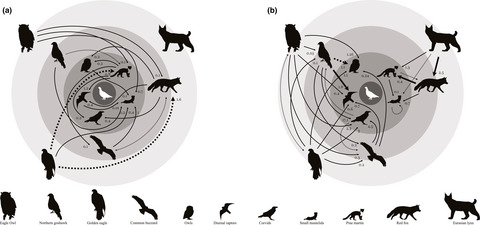
The uncertainties surrounding emerging predator communities in Europe and the resulting networks of predator interactions create novel challenges for conservation and wildlife management but also offer new opportunities to improve our understanding of species ecology and interactions. Through a literature review of the interactions among the predators of forest grouse in Europe, we found a highly interconnected community of predators, with at least 44 interactions among 12 taxa, three of which result in some degree of population suppression. While the frequency of predator interactions is seemingly driven by food limitation and, in mammals, by competition for carcasses, we propose that whether they cause suppression or not is determined by whether impacts are on population classes whose survival has large effects on the population growth rate.
Rewilding with invertebrates and microbes to restore ecosystems: Present trends and future directions
- Pages: 7187-7200
- First Published: 02 May 2021
Understanding the unexplained: The magnitude and correlates of individual differences in residual variance
- Pages: 7201-7210
- First Published: 03 May 2021
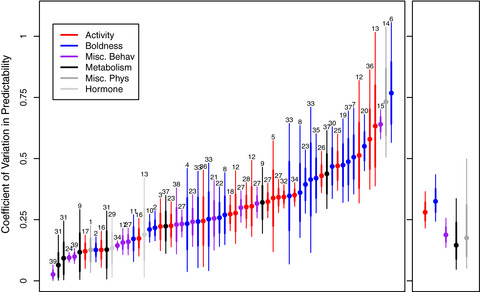
Animals are typically quite unpredictable in behavior with the majority of variance unexplained. We returned to raw data of previously published work, and found almost ubiquitously that individuals vary in their predictability. We discuss potential ecological and evolutionary implications of individual differences in residual variance and suggest productive future research directions.
ORIGINAL RESEARCH
Climate-induced increase in terrestrial carbon storage in the Yangtze River Economic Belt
- Pages: 7211-7225
- First Published: 04 June 2021
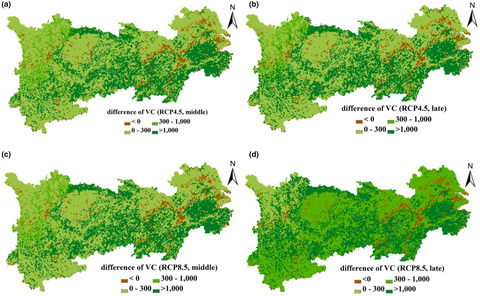
The vegetation and soil carbon storage is 8.97 Pg C and 28.85 Pg C, respectively, which accounts 42.13% and 26.04% of Chinese terrestrial ecosystems. Rising temperature and elevated atmospheric CO2 concentration stimulate the increase of carbon storage in Yangtze River Economic Belt, and the increase is higher under RCP8.5 than that under RCP4.5. Soil carbon storage in western Sichuan province, where has the highest soil carbon storage, decrease in the future under both scenarios.
Termite mound cover and abundance respond to herbivore-mediated biotic changes in a Kenyan savanna
- Pages: 7226-7238
- First Published: 03 June 2021
Mixed plantations of Metasequoia glyptostroboides and Bischofia polycarpa change soil fungal and archaeal communities and enhance soil phosphorus availability in Shanghai, China
- Pages: 7239-7249
- First Published: 27 May 2021
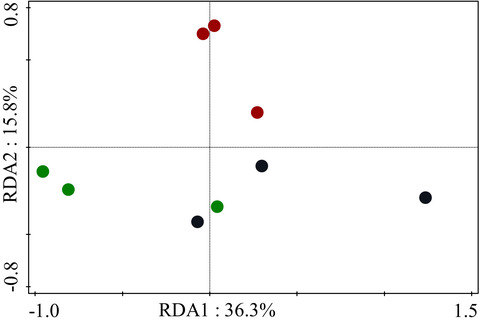
Fungal and archaeal communities were more sensitive to aboveground tree species than bacterial community. Mixed plantations significantly increased the activity of alkaline phosphatase and the content of soil available phosphorus, suggesting that afforestation with Metasequoia glyptostroboides and Bischofia polycarpa is an effective way to alleviate phosphorus deficiency in urban forests in Shanghai, China.
Habitat characteristics or protected area size: What is more important for the composition and diversity of mammals in nonprotected areas?
- Pages: 7250-7263
- First Published: 01 May 2021
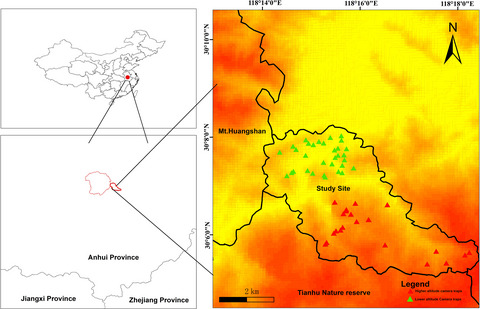
Very few studies (and that too lacking systematic and serious research efforts) have been done in areas surrounding protected areas and natural reserves. There are many knowledge gaps in the understanding of variations in communities or assemblages of mammals in unprotected subtropical forests near protected area boundaries. This study investigated this gap in knowledge.
Processes underlying complex patterns of song trait evolution in a Setophaga hybrid zone
- Pages: 7264-7277
- First Published: 01 May 2021
Female differential allocation in response to extrapair offspring and social mate attractiveness
- Pages: 7278-7291
- First Published: 25 May 2021

To understand how female birds benefit from mating with males other than their social partners (extra-pair mating), we assessed how the production of extra-pair offspring and the relative attractiveness of their social partners influence maternal caregiving and reproduction. Collectively, results show that females differentially allocate resources in response to offspring extra-pair status and their social mate's attractiveness. Females may also obtain direct fitness benefits through the production of extra-pair offspring.
Nocturnal incubation recess and flushing behavior by duck hens
- Pages: 7292-7301
- First Published: 01 May 2021
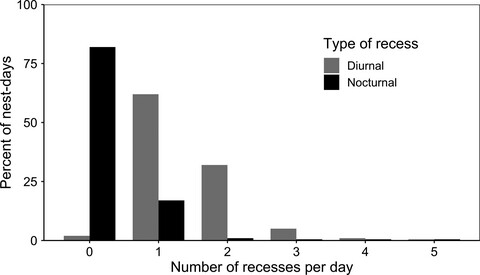
We examined nocturnal incubation recess behavior for mallard and gadwall hens using iButton temperature dataloggers and continuous video monitoring at nests. Fourteen percent of all detected incubation recesses (N = 13,708) were nocturnal and took place on 20% of nest-days (N = 8,668). Using the observation that nest temperature decreased more rapidly when eggs were left uncovered versus covered, we developed a method to characterize eggs during nocturnal incubation recesses as covered or uncovered using nest temperature data. Overall, we predicted that 75% of nocturnal recesses were normal, hen-initiated recesses (eggs covered) whereas 25% of nocturnal recesses were predator-initiated recesses (eggs uncovered).
Spatial–temporal variations in deforestation hotspots in Sumatra and Kalimantan from 2001–2018
- Pages: 7302-7314
- First Published: 02 May 2021
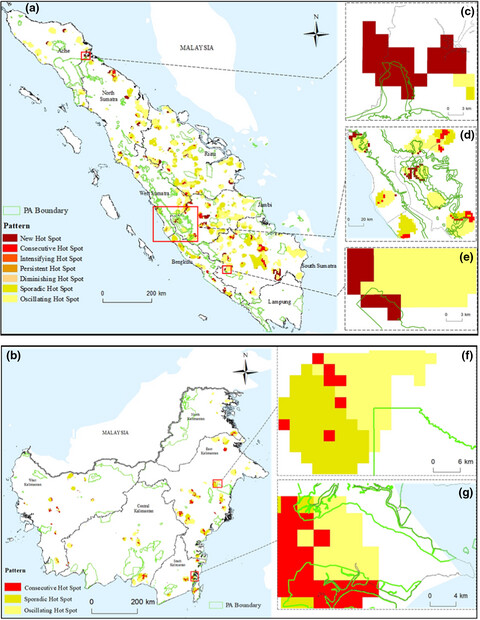
Emerging hotspot analysis, a new approach that can evaluate spatial and temporal trends of forest loss, was performed on annual forest loss data for these islands from 2001–2018. Most hotspots were detected outside PAs; those within PAs were mainly concentrated at boundaries, where lower elevation/slope and high human pressure could be observed. More hotspots were detected on Sumatra than Kalimantan and were mainly distributed in the island's center
The interaction of resource use and gene flow on the phenotypic divergence of benthic and pelagic morphs of Icelandic Arctic charr (Salvelinus alpinus)
- Pages: 7315-7334
- First Published: 02 May 2021
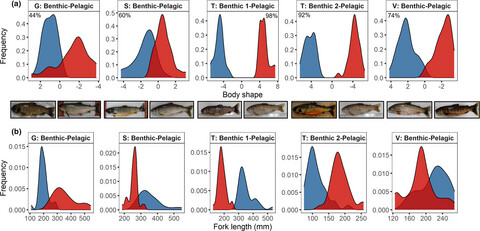
Our study assesses the contribution of differential resource use, phenotype–environment correlations, and reductions in gene flow to adaptive divergence of benthic–pelagic morphs of Icelandic Arctic charr in sympatry. We integrate a variety of analytical approaches to test our hypotheses using geometric morphometrics, stable isotopic signatures, and single nucleotide polymorphisms. Resource use appears to be the agent of selection driving phenotypic divergence along a benthic–pelagic axis and reproductive isolation may maintain this divergence when the intensity of divergent selection is weak.
Modeling vegetation greenness and its climate sensitivity with deep-learning technology
- Pages: 7335-7345
- First Published: 02 May 2021
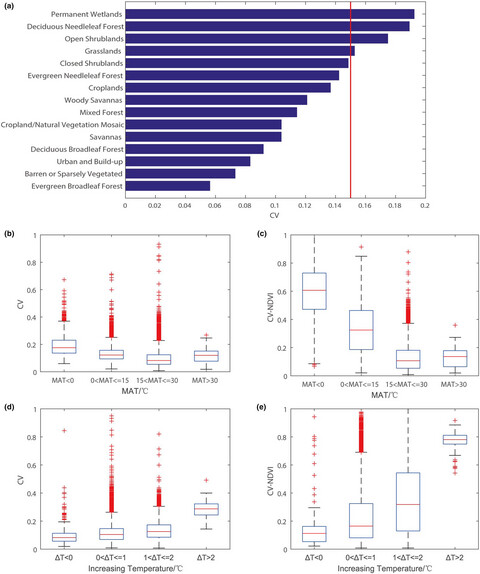
Our study is first of its kind aimed to predict ecosystem dynamics using deep learning technology. We developed a method to quantify sensitivity of vegetation greenness to climate change in the context of deep learning, which contribute to the application of deep learning in global change ecology. Our biome-specific sensitivity of vegetation greenness to climate change can be well explained
The effect of nest temperature on growth and survival in juvenile Great Tits Parus major
- Pages: 7346-7353
- First Published: 01 May 2021
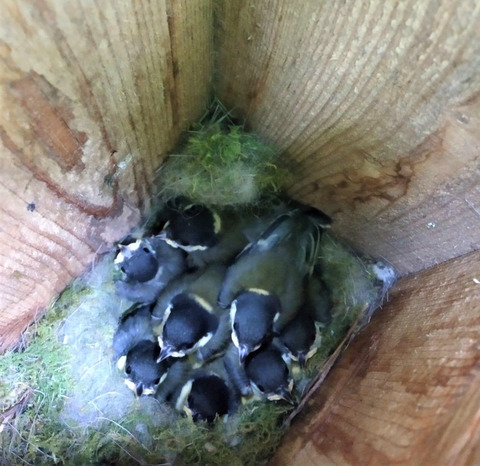
Nest temperature has an important effect on the early stages of bird development and could influence fledging success and growth with longer-term consequences. We increased Great Tit nest temperature by 1.5°C (temperature limit increase set by 2015 Paris Agreement). Our results show that nestlings in heated nest boxes were 1.6% smaller in size at fledging than those in the cooler control nests, indicating lower growth rates in heated boxes, and that their weight was, in addition, 3.3% lower.
An open spatial capture–recapture model for estimating density, movement, and population dynamics from line-transect surveys
- Pages: 7354-7365
- First Published: 03 May 2021
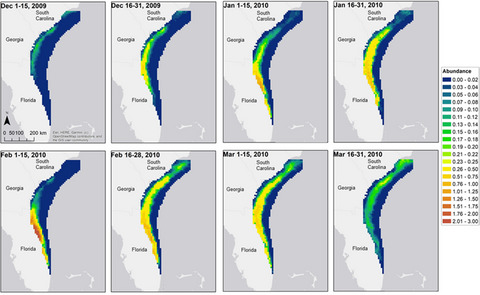
We developed an open spatial capture–recapture model that can be applied to line-transect survey data. The model estimates demographic parameters while simultaneously providing inference on factors that influence spatial and temporal variation in density and space use. We illustrate its use with aerial survey data for North Atlantic right whales (Eubalaena glacialis) in the southeastern United States.
Trait hierarchies are stronger than trait dissimilarities in structuring spatial co-occurrence patterns of common tree species in a subtropical forest
- Pages: 7366-7377
- First Published: 01 May 2021
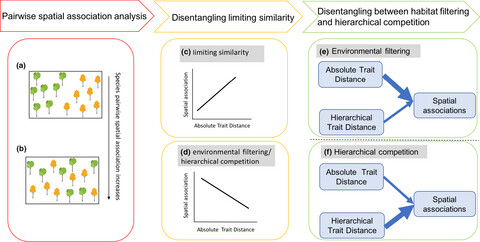
This study employed a novel method, by offering the integration of pairwise spatial association and trait dissimilarity as well as trait hierarchy, to disentangle the relative importance of multiple assembly mechanisms in structuring co-occurrence patterns, especially the mechanisms of environmental filtering and hierarchical competition, which lead to indistinguishable co-occurrence patterns. This study also reinforced the importance of trait hierarchy rather than trait dissimilarity in driving neighborhood competition.
Niche–trait relationships at individual and population level in three co-occurring passerine species
- Pages: 7378-7389
- First Published: 02 May 2021
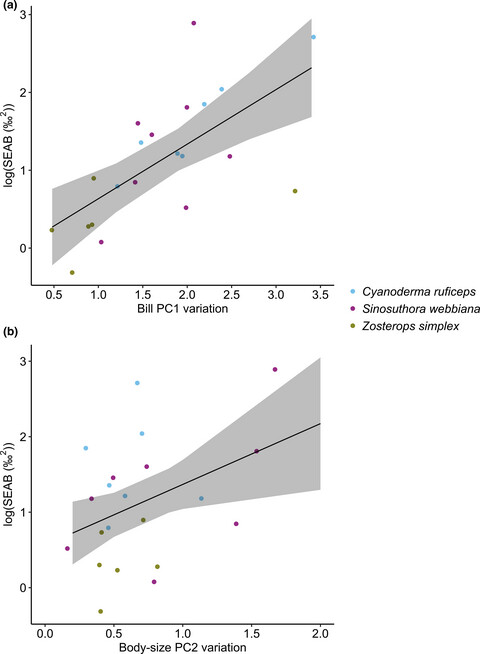
This study provided empirical evidence for the niche variation hypothesis in three passerine species (Cyanoderma ruficeps, Sinosuthora webbiana, and Zosterops simplex) in Taiwan. All three species showed positive associations between isotope niche width and bill size variation. Furthermore, all three species shared the same pattern that as individual birds occupied unique bill trait space within the population, they also tended to occupy unique isotope space, suggesting niche width expansion at population level through morphological differentiation at individual level.
Density dependence of daily activity in three ungulate species
- Pages: 7390-7398
- First Published: 01 May 2021
Ecological genetics of Juglans nigra: Differences in early growth patterns of natural populations
- Pages: 7399-7410
- First Published: 13 May 2021
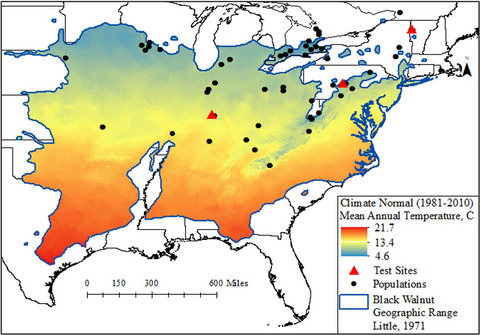
We model early growth patterns of Juglans nigra populations growing in common gardens and assess whether growth patterns are associated with populations' home climate. Results indicate that populations from warmer climates have the highest cumulative growth through time and reach maximum absolute growth at an earlier age than populations from colder climates. Populations from warm climates also have higher relative growth rates at any given tree size.
MultiGWAS: An integrative tool for Genome Wide Association Studies in tetraploid organisms
- Pages: 7411-7426
- First Published: 12 May 2021
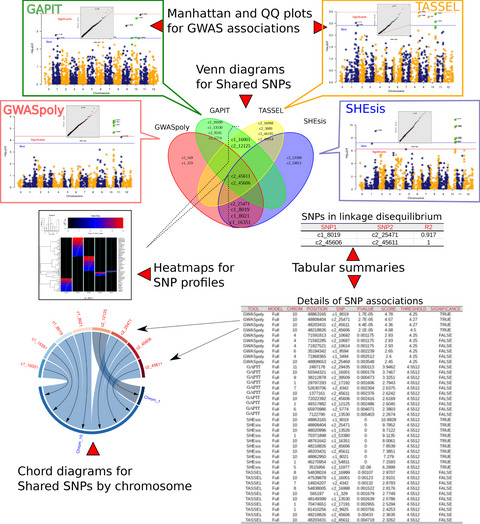
The genome-wide association studies (GWASs) are essential to determine the genetic bases of either ecological or economic phenotypic variation across individuals within populations of model and nonmodel organisms. Replication is a good practice to assess results, but straightforward methodologies that manage both replication and tetraploid data are still missing. To solve this problem, we designed the MultiGWAS, a tool that does GWAS for diploid and tetraploid organisms by executing in parallel four software packages, two for polyploid data (GWASpoly and SHEsis) and two for diploid data (GAPIT and TASSEL). MultiGWAS includes (1) the input and preprocessing of genomic data in different formats (including VCF files), (2) association analysis by running the GWAS software in parallel, (3) postprocessing and summarizing of their results, and (4) reporting using graphical and tabular views. MultiGWAS identifies both the highest scoring and shared associations between the four software packages, which helps users decide more intuitively on possible true or false associations. MultiGWAS can test for additive and dominant gene action models, and, through a proprietary scoring function, select the best model to report its associations. We tested MultiGWAS with public tetraploid potato data for tuber shape and several simulated data under both additive and dominant models. These tests demonstrated that MultiGWAS is better at detecting reliable associations than using each of the four software packages individually.
Population dynamics of little brown bats (Myotis lucifugus) at summer roosts: Apparent survival, fidelity, abundance, and the influence of winter conditions
- Pages: 7427-7438
- First Published: 07 May 2021

This is a mark–recapture analysis of little brown bat populations at two summer roosts to understand abundance, survival, and fidelity. At the maternity colony, adult females showed high survival and fidelity, while another colony that may serve as a maternity, day, and night roosts had lower estimates of fidelity.
Plant–plant communication and community of herbivores on tall goldenrod
- Pages: 7439-7447
- First Published: 02 May 2021
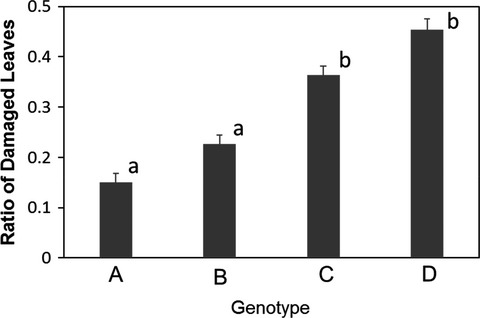
Why do plants distinguish volatiles from kin or genetically far plants? We hypothesize that plants respond only to important conditions; the induced defense is not free of cost for the plant. Our results support the hypothesis: goldenrods respond to volatiles from genetically close plants because they would have similar arthropod species.
The mid-domain effect and habitat complexity applied to elevational gradients: Moss species richness in a temperate semihumid monsoon climate mountain of China
- Pages: 7448-7460
- First Published: 04 May 2021
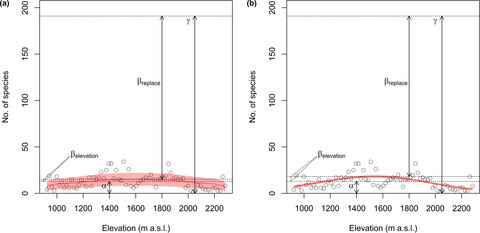
We observed the hump-shaped distribution pattern of species richness along elevational gradient. The mid-domain effect (MDE) and the habitat complexity hypothesis were supported with MDE being the primary driver for richness patterns, whereas little support was found for the energy and the environment. Moss species richness pattern in the mountain is driven by ecological and evolutionary effects, whereas evolutionary factors predominately shape the large heterogeneity through dispersal, extinction, and speciation processes.
An index for measuring functional extension and evenness in trait space
- Pages: 7461-7473
- First Published: 06 May 2021
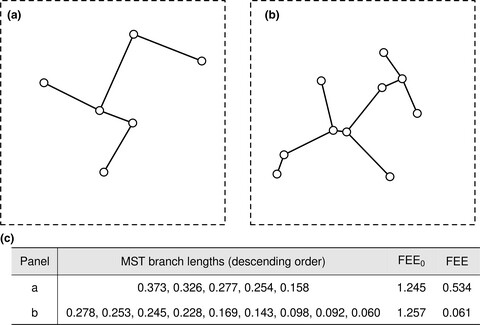
We presented a new functional diversity index based on the straightforward notion that a community has high diversity when its species are distant from each other in trait space. This index presents four desired properties: allowing a fair comparison of functional diversity across different species richness levels; preserving the essence of single-facet indices while overcoming some of their limitations; standardizing comparisons among communities by taking into consideration the trait space of the shared species pool; and having the potential to distinguish among different community assembly processes.
Molecular diet analysis of neotropical bats based on fecal DNA metabarcoding
- Pages: 7474-7491
- First Published: 02 May 2021

Inferring the exact diets of small, nocturnal mammals such as bats is notoriously difficult. Limited knowledge of what bats actually eat leaves important trophic interactions and food web networks unclear. Using molecular barcoding of plants, vertebrates, and invertebrates, we report fine-scale dietary detection for 25 species of Belizean bats.
A morphological trait involved in reproductive isolation between Drosophila sister species is sensitive to temperature
- Pages: 7492-7506
- First Published: 25 May 2021

The closely related species Drosophila yakuba and Drosophila santomea have distinctive ventral branches, a male genital structure involved in reproductive isolation. We designed a semi-automatic method to measure the shape of the ventral branches and found that temperature does not affect ventral branches in D. yakuba but that in D. santomea ventral branches tend to morph into a D. yakuba-like shape at lower temperature.
Comparative transcriptomics of albino and warningly-coloured caterpillars
- Pages: 7507-7517
- First Published: 02 May 2021
The complete mitogenome of Phymorhynchus sp. (Neogastropoda, Conoidea, Raphitomidae) provides insights into the deep-sea adaptive evolution of Conoidea
- Pages: 7518-7531
- First Published: 02 May 2021
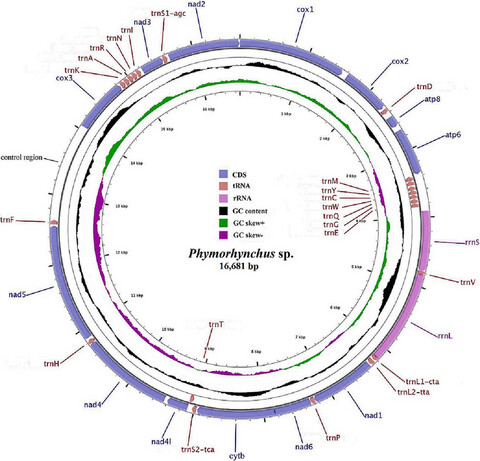
In this paper, the mitogenome of Phymorhynchus sp. from the Haima methane seep was completely assembled and characterized. We also discussed the phylogenetic relationships and gene arrangements of the superfamily Conoidea. Furthermore, eight residues located in atp6, cox1, cytb, nad1, nad4, and nad5 genes were inferred to be positively selected sites along the branches leading to deep-sea conoidean gastropods, which indicate that the related genes were potentially under positive selection pressure.
Pond Acoustic Sampling Scheme: A draft protocol for rapid acoustic data collection in small waterbodies
- Pages: 7532-7543
- First Published: 01 May 2021
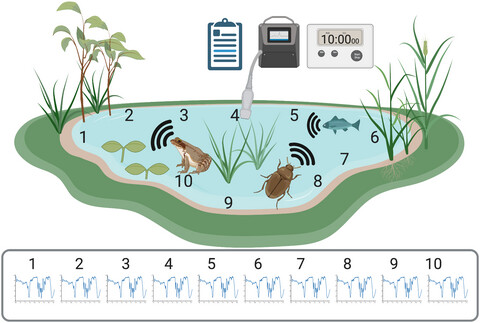
New acoustic survey methods are becoming increasingly available to researchers, citizen scientists, and conservation practitioners. We propose a Pond Acoustic Sampling Scheme (PASS), to allow standardized individual audio samples to be collected rapidly from small waterbodies, alongside environmental and survey metadata. This will allow a wide range of participants, without complicated/expensive equipment, to contribute to collaborative data collection projects, and enable the development of the consistent datasets often missing from ecoacoustics research.
Maternal effects and the outcome of interspecific competition
- Pages: 7544-7556
- First Published: 02 May 2021
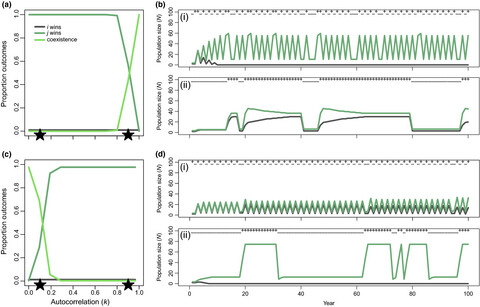
Maternal effects can overturn competitive differences among species, driving patterns of coexistence or exclusion that would not be possible in their absence. Who wins and who loses depend on the particular strategies pairs of species employ, as well as how variable the environment they are found in is. As such, maternal effects may act as a species' niche dimension.
Historical surveys reveal a long-term decline in muskrat populations
- Pages: 7557-7568
- First Published: 02 May 2021
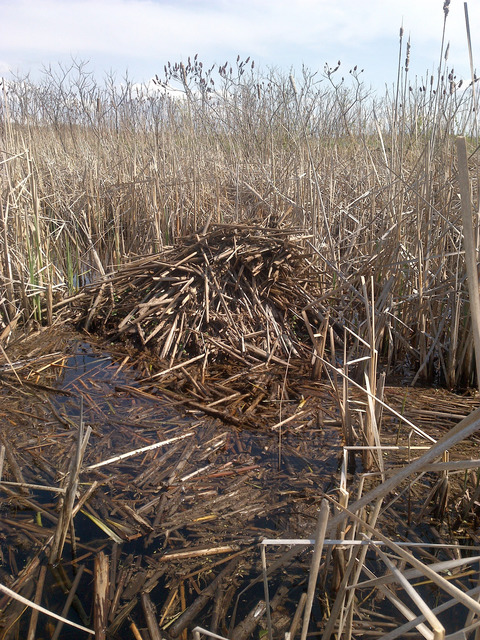
The muskrat (Ondatra zibethicus) plays a valuable role in wetland ecology and is a staple among fur harvesters in North America. We investigated trends in muskrat populations at two large Great Lakes coastal wetlands and found that muskrat abundance declined significantly over the past 40–50 yrs, providing confirmation that reported declines in muskrat harvest correspond to actual declines in muskrat abundance. Muskrat decline can result in a loss of ecosystem services and may also be an indication of broader wetland ecosystem degradation.
Cooperation behavior of fore- And hindlimbs during jumping in Rana dybowskii and Xenopus laevis
- Pages: 7569-7578
- First Published: 03 May 2021
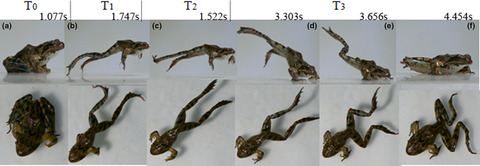
In this work, we put forward a detailed comparative description of jumping behavior between two frog species, Rana dybowskii and Xenopus laevis. High-speed cameras were used to explore the movement of different joints in fore- and hindlimbs of these two animals, and kinematic analysis was operated to identify both homologous behaviors and significant differences between them. We found that the Rana dybowskii's fore- and hindlimbs had good cooperation during jumping while the Xenopus laevis' uncooperative behavior in limbs may give a functional explanation for the deficiency in terrestrial jumping; besides, the R. dybowskii's landing followed the "hands-belly-feet slap" strategy, and Xenopus laevis had clumsy landing with "belly-flops" sequence. The result gained here clarifies the cooperation behavior of anuran limbs and may supply a new insight into our understanding of the anuran's evolution.
Hormone-mediated foraging strategies in an uncertain environment: Insights into the at-sea behavior of a marine predator
- Pages: 7579-7590
- First Published: 03 May 2021
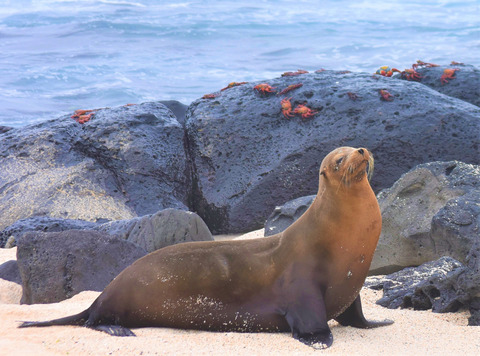
Hormones are known to be physiological mediators of energy mobilization and behavioral adjustment during foraging episodes; however, few studies have narrowed focus and described this relationship on an intraspecific level. We show strong between-individual variation of cortisol, testosterone, and thyroid hormones in adult female Galapagos sea lions, which align with highly diverse foraging strategies. In doing so, we provide insights into how mechanistic constraints and risk assessment may facilitate individual specialization in foraging behavior to exploit different ecological niches.
An automatic method for removing empty camera trap images using ensemble learning
- Pages: 7591-7601
- First Published: 02 May 2021
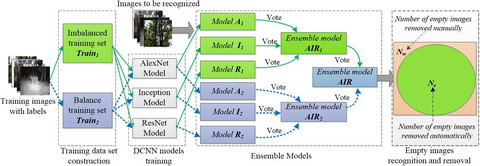
Based on deep convolutional neural networks and a smaller-scalar dataset, we proposed an ensemble learning method using conservative strategies to automatically remove a part of empty images to save the personnel and time costs for manually removing empty images. Furthermore, we presented three schemes with different omission errors of animal images, which provided different alternatives for users with various tolerances for omission errors to remove different percentages of empty camera trap images automatically. Our experimental results showed that our schemes automatically removed 50.78%, 58.48%, and 77.51% of the empty images in the dataset when the omission errors were 0.70%, 1.13%, and 2.54%, respectively.
Accelerated vegetation succession but no hydrological change in a boreal fen during 20 years of recent climate change
- Pages: 7602-7621
- First Published: 02 May 2021
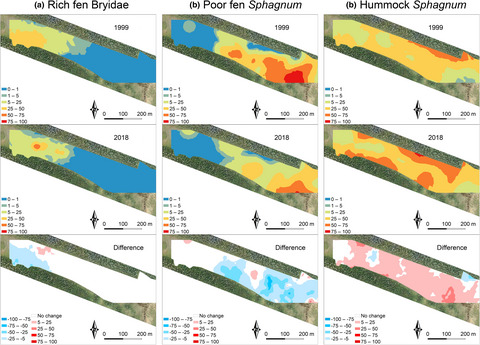
We studied global change effects on vegetation and hydrology in a pristine boreal mire in a decadal time-span. We repeated over 200 measurements of plant species cover, water-table depth, and several water chemistry variables, after a marked shift to warmer conditions. We did not find significant changes in water chemistry, while remarkable vegetation changes were observed, suggesting that responses intrinsic to vegetation were more significant than indirect effects via local hydrology to the ecosystem response to recent warming.
Historic range dynamics in Kaiser's mountain newt (Neurergus kaiseri): Insights from phylogeographic analyses and species distribution modeling
- Pages: 7622-7633
- First Published: 02 May 2021
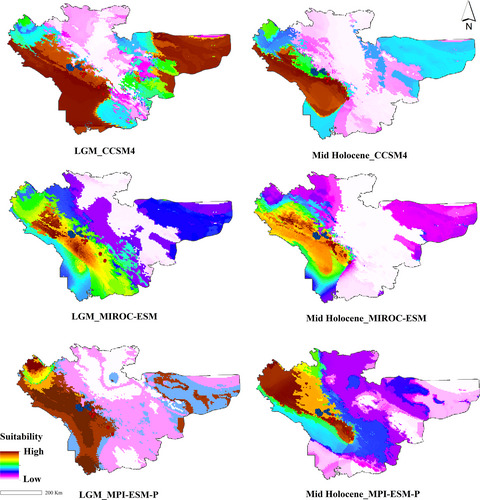
Phylogeographical analysis followed by two mitochondrial DNA (mtDNA) marker and potential recent and past distribution (the Last Glacial Maximum, LGM, 21 Kya and the Mid-Holocene, 6 Kya) reconstructed by ensemble species distribution modeling using nine algorithms with CCSM4, MIROC-ESM, and MPI-ESM-P models. Biogeography analysis showed that both vicariance and dispersal events played an important role in the formation of recent species distribution of N. kaiseri. Based on SDM projection onto paleoclimatic data, N. kaiseri displayed a scenario of past range expansion that followed by post-glacial contraction.
No evidence for female kin association, indications for extragroup paternity, and sex-biased dispersal patterns in wild western gorillas
- Pages: 7634-7646
- First Published: 25 May 2021
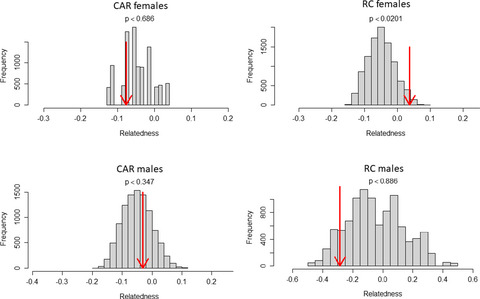
We found evidence for extra-group paternity for two offspring. Adult females were not significantly more related within groups than between groups and were similarly related to adult males from their group than from other groups. Comparing relatedness among females and among males revealed that males disperse farer than females.
Honest signals and sexual conflict: Female lizards carry undesirable indicators of quality
- Pages: 7647-7659
- First Published: 02 May 2021
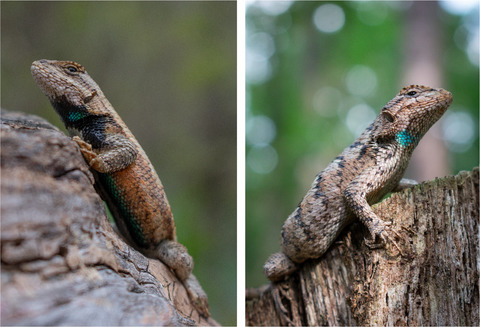
Sex-specific regulatory mechanisms may allow adaptive sexual dimorphism despite genetic similarities between sexes. However, many species exhibit sexually selected ornaments with incomplete sexual dimorphism, even though costly to one sex. We show that colorful badges of eastern fence lizards are condition dependent and honest signals of quality in males, but not in females, and that partial regulation of this trait by a sex-nonspecific hormone (corticosterone) is one factor preventing complete sexual dimorphism and the resolution of intralocus sexual conflict.
Plastid genome sequencing, identification of nuclear SNP markers, and quality assessment of medicinal rhizomatous herb Polygonatum odoratum (Asparagaceae) cultivars
- Pages: 7660-7676
- First Published: 02 May 2021
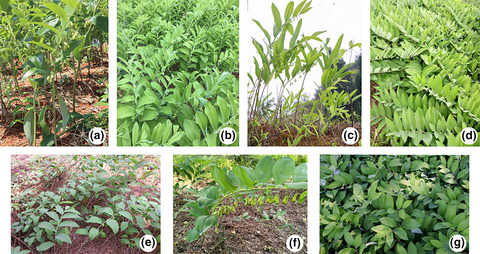
Polygonatum odoratum cultivars can be differentiated morphologically. The nonmonophyletic relationship revealed from the phylogenetic analyses based on the plastome sequences and a monophyletic form in the RAD-based linkage map suggested the possible presence of hybrids in certain cultivars. Polygonati Odorati Rhizoma from the cultivar Zhongzhu (GDZZ) met the criteria in the Chinese Pharmacopoeia as raw material for medicinal drug production.
Web databases of feather photographs are useful tools for avian morphometry studies
- Pages: 7677-7684
- First Published: 02 June 2021
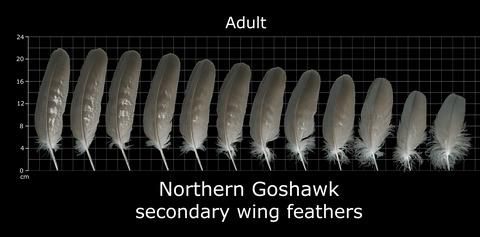
Wing area and aspect ratio are key variables for studies of avian comparative ecology, despite the complexity of measuring them both in living and in museum specimens. The systematic databases of feather photographs available on the Internet may offer an alternative way of obtaining such morphometric data. Published data on wing area were obtained for 317 bird species, and feather measurements from web photograph databases were found for 225 of them. A variable termed “lift generation area,” a proxy for wing area, was calculated for each species. “Lift generation area” proved to be highly informative as a proxy for wing area for the study species as a whole (R2 > .98). We conclude that measurements made from feather photograph databases are reliable for use in studies of avian comparative ecology.
Noninvasively measured immune responses reflect current parasite infections in a wild carnivore and are linked to longevity
- Pages: 7685-7699
- First Published: 07 May 2021
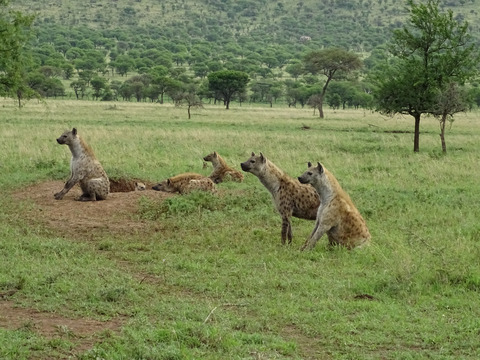
Host immune defenses are important components of host–parasite interactions that affect the outcome of infection and may have fitness consequences when increased allocation of resources to immune responses undermines other essential life processes. We adapted existing assays to measure innate and adaptive immune responses using fecal samples from spotted hyenas (Crocuta crocuta). We investigated the associations between parasite infections, immune responses, and longevity modulated by ecological and life-history factors. Our findings increase knowledge on the complex relationship between gastrointestinal parasites and the immune responses of their host and reveal fitness-relevant effects of immune responses to infection.
Cryptic species and hidden ecological interactions of halictine bees along an elevational gradient
- Pages: 7700-7712
- First Published: 17 May 2021
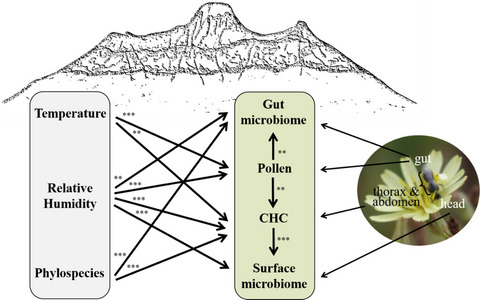
Changes of abiotic and biotic conditions along elevational gradients represent serious challenges to organisms which may promote the turnover of species, traits, and biotic interaction partners. We used molecular methods to study cuticular hydrocarbon (CHC) profiles, biotic interactions and phylogenetic relationships of halictid bees of the genus Lasioglossum along a 2,900 m elevational gradient at Mt. Kilimanjaro, Tanzania. The detected interactive effects of climatic conditions on gut and surface microbiomes, CHC profiles, and pollen diet suggest complex feedbacks among abiotic conditions, ecological interactions, physiological adaptations, and phylogenetic constraints as drivers of halictid bee communities at Mt. Kilimanjaro.
Epigenetic effects of parasites and pesticides on captive and wild nestling birds
- Pages: 7713-7729
- First Published: 03 May 2021
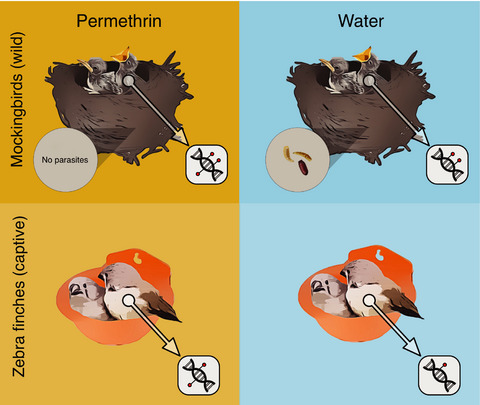
McNew et al. studied the effects of parasites and permethrin exposure on DNA methylation of nestling birds. They found that permethrin exposure in captivity results in differences in methylation; however, the same differences were not seen in wild birds, in response to either parasitism or permethrin.
Underwater photogrammetry for close-range 3D imaging of dry-sensitive objects: The case study of cephalopod beaks
- Pages: 7730-7742
- First Published: 03 May 2021
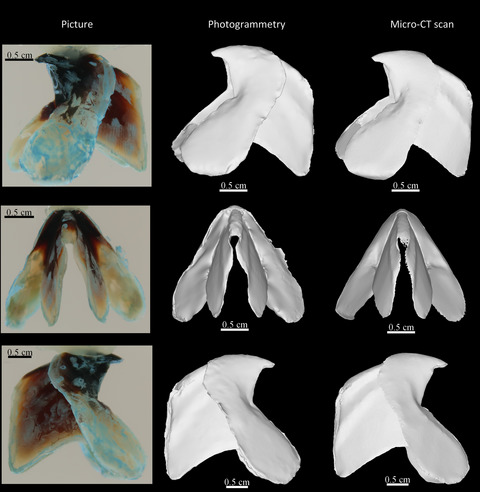
We propose a new close-range underwater photogrammetry protocol adapted to small dry-sensitive objects. We used cephalopod beaks as a case study because they combine several problems for 3D imaging. The comparison between photogrammetry and microtomography shows a high accuracy of the models reconstructed by photogrammetry, allowing various applications for quantitative analysis.
The effect of competing carnivores on the feeding behaviour of leopards (Panthera pardus) in an African savanna
- Pages: 7743-7753
- First Published: 11 May 2021
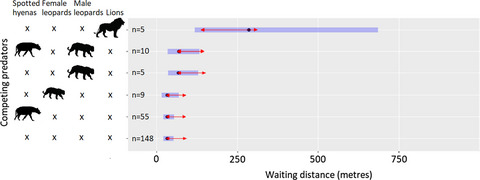
Interactions between sympatric carnivores at food sources influence food acquisition and species behaviour. Intraguild competition has fitness, reproductive, and survival implications to subordinate species, and this paper investigates the effect of spotted hyenas, lions, and conspecifics on the feeding habits of leopards in savanna ecosystems.
Directional seed and pollen dispersal and their separate effects on anisotropy of fine-scale spatial genetic structure among seedlings in a dioecious, wind-pollinated, and wind-dispersed tree species, Cercidiphyllum japonicum
- Pages: 7754-7767
- First Published: 07 May 2021
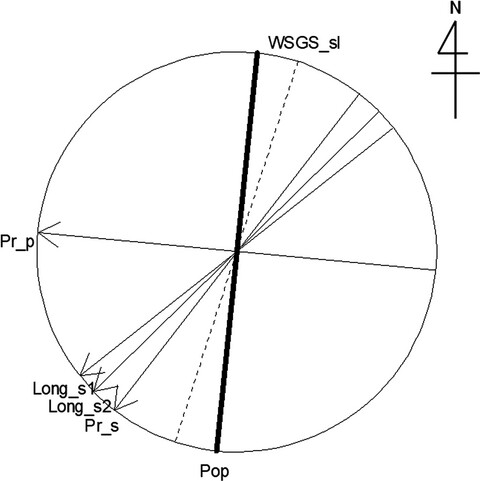
We conducted a population genetics study for a dioecious, wind-pollinated, and wind-dispersed tree species based on genotypes at five microsatellite loci of 281 adults of a population distributed over a ca. 80 ha along a stream and 755 current-year seedlings. The results indicated directionalities of gene dispersal via seeds and pollen separately, and effect of the directional seed dispersal on anisotropy of a fine-scale spatial genetic structure among the seedlings.
Quantitative resistance differences between and within natural populations of Solanum chilense against the oomycete pathogen Phytophthora infestans
- Pages: 7768-7778
- First Published: 11 May 2021
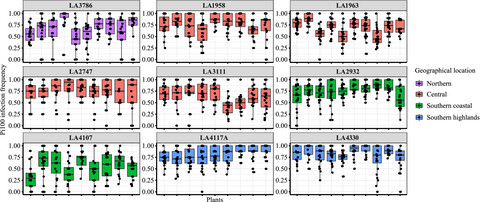
Populations of the wild tomato species Solanum chilense show large variation in quantitative resistance properties against the oomycete pathogen Phytopjthora infestans between and within populations. This variation is largely defined by the plant genotype and not by the pathogen genotype and thus likely represents a form of variation in basal immune responses.
The assembly of caprine Y chromosome sequence reveals a unique paternal phylogenetic pattern and improves our understanding of the origin of domestic goat
- Pages: 7779-7795
- First Published: 04 May 2021
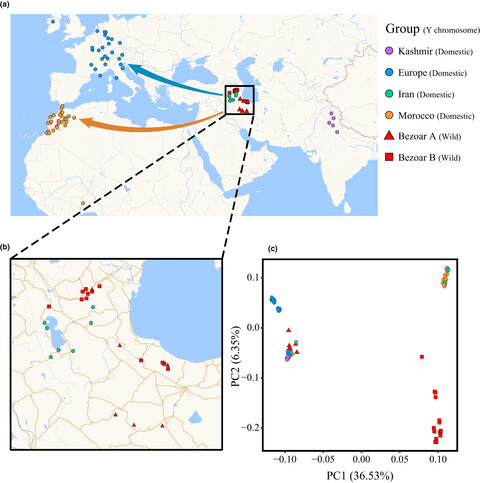
In this paper, we first assembled goat Y chromosome into 33 scaffolds totaling 11.5 Mb, and a subset of 5.84 Mb was further ordered into an assembly with the validation of goat radiation hybrid map. Then, we identified SNPs of 96 goat samples worldwide to exploit the paternal relationships among wild bezoars and domestic goats. The paternal lineages showed a clear division of bezoars and goats into two clades, and they were independent of goat domestication. Further demographical history of paternal and maternal lineages showed evident differences, with a bottleneck effect in mtDNA around 2,000 YBP, which may be related to the worldwide dispersal of goat in the post-Neolithic period, implied the possibility of gender preference in goat domestication. Our research provided a new perspective of goat evolution history.
Small-scale genetic structure and mating patterns in an extensive sessile oak forest (Quercus petraea (Matt.) Liebl.)
- Pages: 7796-7809
- First Published: 13 May 2021

Extensive, apparently homogenous oak forests are far from uniform on the genetic level. On the contrary, they form highly complex mosaics of remarkably small local neighborhoods. This counterbalances the levelling effect of long-distance dispersal and may increase the species’ adaptive potential. Incorporating these dynamics into the management, conservation, and restoration of oak forests can support the conservation of forest genetic diversity and assist those forests in coping with environmental change.
Comparative plastome analysis of Blumea, with implications for genome evolution and phylogeny of Asteroideae
- Pages: 7810-7826
- First Published: 06 May 2021
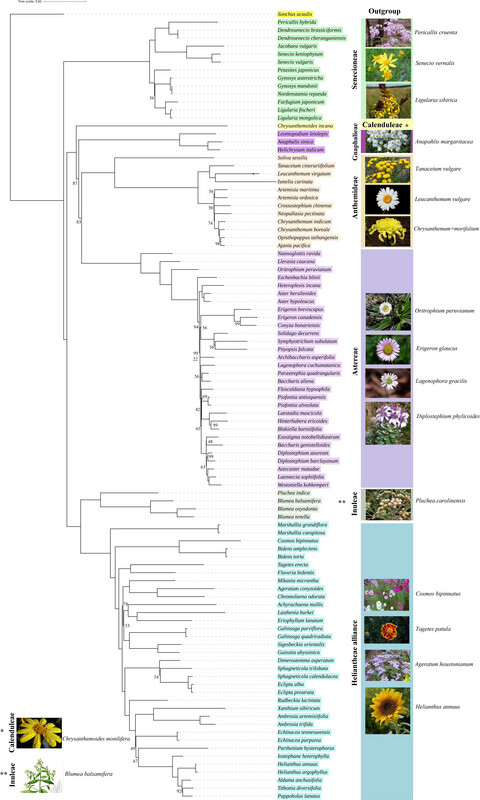
Our study provides insight into plastome structure evolution of the genus Blumea and the subfamily Asteroideae (Asteraceae). Previously, the phylogeny of Blumea could not be resolved due to lack of knowledge of suitable polymorphic loci. Based on comparative genomics, we report suitable polymorphic loci which are also co-occur with repeats and support the role of repeats as proxy for identification of polymorphic loci. The conflicting phylogenetic signals observed at tribe level between plastome and nuclear genome data may be due to reticulate and abrupt evolution which require further investigation.
Courtship with two spoons—Anatomy and presumed function of the bizarre antennae of Cardiocondyla zoserka ant males
- Pages: 7827-7833
- First Published: 03 May 2021
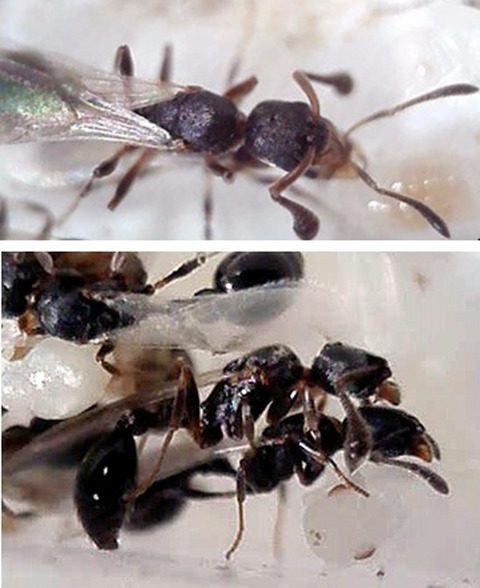
Winged males of the ant Cardiocondyla zoserka have evolved a bizarre secondary sexual trait: uniquely shaped antennae with a spoon-like tips that show heavily sculptured ventral surfaces with numerous invaginations. We here report on the courtship behavior of C. zoserka males and describe antennal glands with class 3 gland cells, which presumably secrete a close range sex pheromone.
Effects of temperature and photoperiod on the seasonal timing of Western honey bee colonies and an early spring flowering plant
- Pages: 7834-7849
- First Published: 07 May 2021
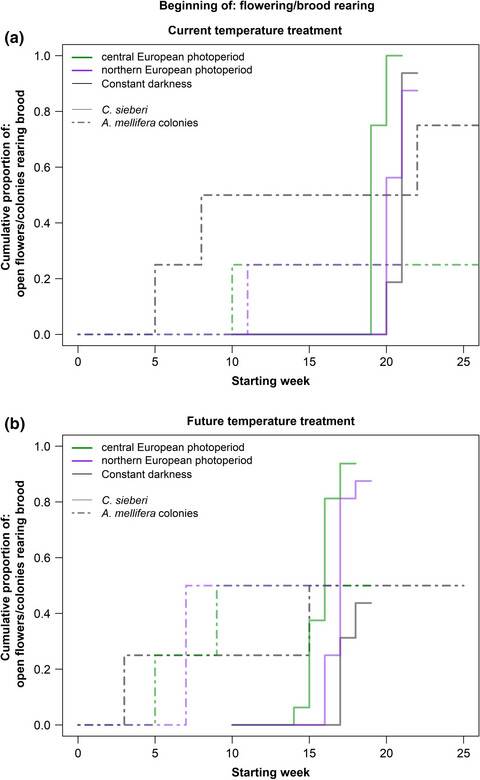
This study analyzed whether differences in the importance of temperature and photoperiod as Zeitgebers could lead to different phenological responses of the early-season flowering geophyte Crocus sieberi and Apis mellifera colonies under future climates. Increased mean temperatures in winter and early spring advanced the flowering phenology of C. sieberi and intensified brood rearing activity of A. mellifera but did not advance their brood rearing activity. Flowering phenology of C. sieberi also relied on photoperiod, while brood rearing activity of A. mellifera did not. Increases in temperature can induce changes in phenological responses and photoperiod can also play a critical role in these responses.
Spatial variation in antler investment of Apennine red deer
- Pages: 7850-7864
- First Published: 03 May 2021
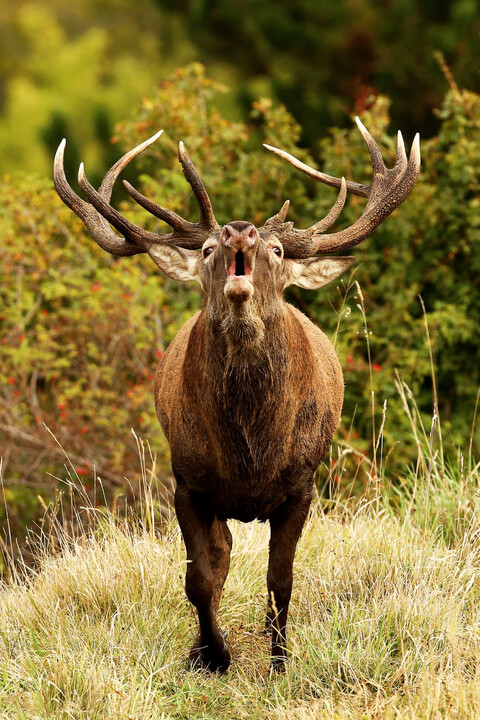
Heterogeneity in resource availability and quality can trigger spatial patterns in the expression of sexually selected traits. In this paper, we investigate spatial patterns in body mass, antler mass, and antler investment in red deer Cervus elaphus, one of the iconic game species in Europe. Fine-scale spatial variations in body mass, antler mass, and, to a lesser extent, antler allocation matched spatial differences in land cover, supporting spatial variation in the expression of sexually selected traits. Photo by Andrea Dal Pian
The potential for cleaner fish-driven evolution in the salmon louse Lepeophtheirus salmonis: Genetic or environmental control of pigmentation?
- Pages: 7865-7878
- First Published: 16 May 2021
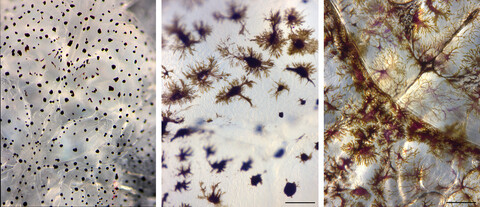
Recent anecdotal reports suggest that in regions where cleaner fish are extensively used on farms, lice appear less pigmented and therefore less visible to the cleaner fish. To answer whether these observations reflect a plastic (environmental) or adaptive (genetic) response, we developed a pigment scoring system and conducted complimentary experiments that demonstrate that lice pigmentation is strongly influenced by environmental conditions, and most likely daylight. We also detected small but significant differences in pigmentation between two strains of lice reared in the same environment, suggesting that lice may display both plastic and adaptive responses to extensive cleaner fish usage where the degree of pigmentation is likely to influence survival.
Testing the precision and sensitivity of density estimates obtained with a camera-trap method revealed limitations and opportunities
- Pages: 7879-7889
- First Published: 07 May 2021
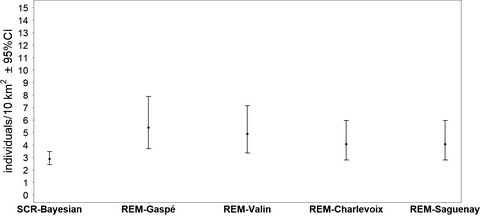
We tested the reliability of the Random Encounter Model, a camera-trap method, to estimate black bear densities in the same study area where we were conducting a hair-snagging sampling with a traditional spatial capture–recapture model. We also tested the influence of a parameter (average speed) imported from other bear populations that is required to calculate the densities with this camera-trap estimator. We conclude that the Random Encounter Model can be an affordable alternative to conventional spatial capture–recapture for black bears.
Prey availability and intraguild competition regulate the spatiotemporal dynamics of a modified large carnivore guild
- Pages: 7890-7904
- First Published: 16 May 2021
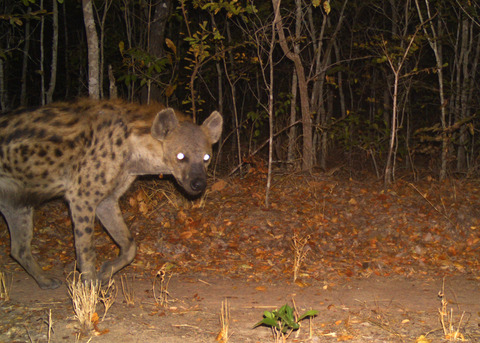
Carnivore guild dynamics can be altered by changes in community assemblage and the loss of natural prey. Here, we quantify the spatiotemporal dynamics of leopard and spotted hyena in a modified carnivore guild where they are the only remaining resident members. The presence of leopard and spotted hyena was significantly associated with the detection of preferred prey and competing carnivores, increasing the likelihood of species interaction. Female leopard exhibited temporal responses to mitigate potential conflict with spotted hyena and male conspecifics.
Linking behavioral states to landscape features for improved conservation management
- Pages: 7905-7916
- First Published: 25 May 2021
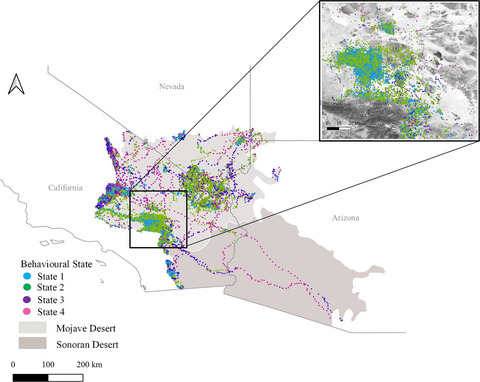
Despite the importance of linking habitat use to specific behaviors, this is almost never done, in part because of the many challenges in understanding where and when individual behaviors occur. Here, we use long-term, short-interval, and highly precise GPS data as input to recently developed models to interpret animal behavior from telemetry data to identify where and when behavioral states occur. Subsequently, we link these behavioral states to habitat, as a mechanism to identify the environmental correlates of each behavior, and to infer potential threats to these animals based on those behavior-specific habitat associations.
Genetic diversity and evolutionary patterns of Taraxacum kok-saghyz Rodin
- Pages: 7917-7926
- First Published: 07 May 2021
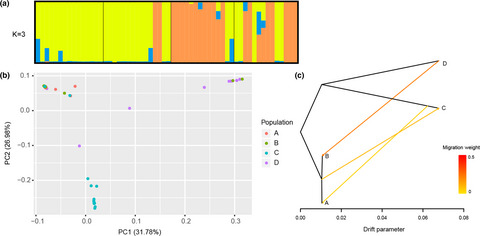
In the current study, we have discovered that 58 Taraxacum kok-saghyz Rodin materials collected from different regions can be classified into three different groups based on SNP markers along with their geographical origins: (a) Zhaosu County in Xinjiang (ZS); (b) Tekes County in Xinjiang (TS); and (c) Tuzkol lake in Kazakhstan. We found that TKS population expansion from ZS to Kazakhstan and TS occurred, as well as gene flow between them. These findings presumed that TKS adaptation to the Yili River Valley of Xinjiang, China.
Enhancing flowering plant functional richness improves wild bee diversity in vineyard inter-rows in different floral kingdoms
- Pages: 7927-7945
- First Published: 04 May 2021
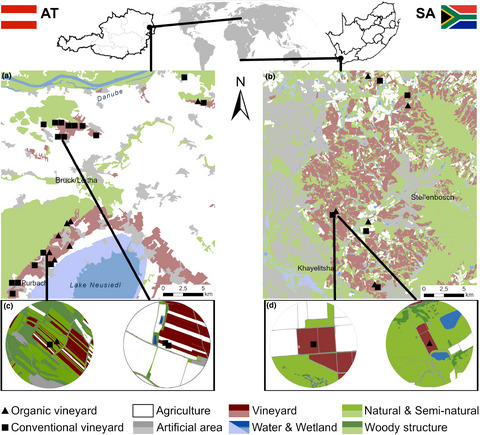
This article studies how wild bee and plant diversity and functional traits are related to vineyard management intensities and viticulture landscape properties in Austria and South Africa. Common denominators for wild bees and flowering plants are studied across countries. Unique characteristics of the bee and plant communities in the vineyards of the two countries are analyzed using functional traits to provide subtlety conservation measures for wild bees in viticultural agroecosystems.
Relieving efforts in palm-tree tissue sampling for population genetics analyses
- Pages: 7946-7950
- First Published: 11 May 2021
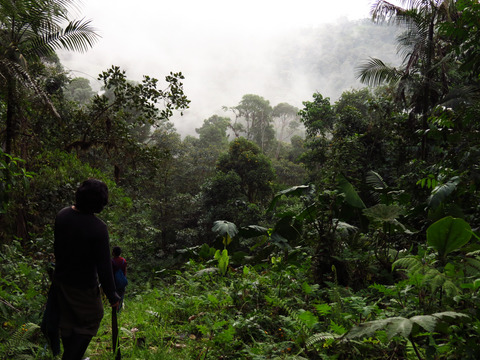
This study tests root tissue viability as an alternative nucleic acid source (root vs. leaf) and explores different protocols (tissue storage and DNA purification methods) to obtain high-quality DNA samples. Results showed the effective potential of using root tissue as an alternative source, which could facilitate populations sampling of palm-tree species.
Genetic differentiation and signatures of local adaptation revealed by RADseq for a highly dispersive mud crab Scylla olivacea (Herbst, 1796) in the Sulu Sea
- Pages: 7951-7969
- First Published: 04 May 2021
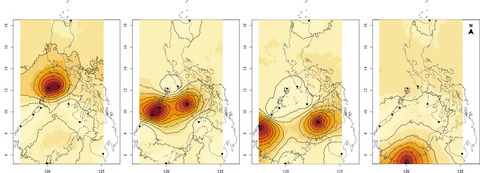
This research presents a seascape genomics approach using combined biophysical modeling and RADseq data to examine the genetic structure of a highly dispersive mud crab Scylla olivacea in the Sulu Sea, Philippines. We report significant genetic differentiation found using mostly neutral markers despite potential for widespread connectivity as indicated by the model simulations. Our study also highlights the pattern of latitudinal genetic structure as revealed by the outlier loci, suggesting local adaptation to environmental clines such as sea surface temperature.
The Latent Dirichlet Allocation model with covariates (LDAcov): A case study on the effect of fire on species composition in Amazonian forests
- Pages: 7970-7979
- First Published: 05 May 2021
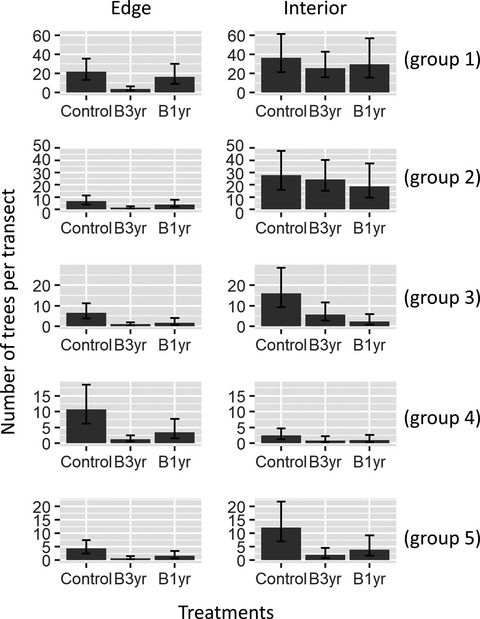
We introduce a modified Latent Dirichlet Allocation model (called LDAcov) which allows for the incorporation of covariates, enabling statistical inference on the drivers of change of latent communities, spatial interpolation of results, and prediction based on future environmental change scenarios. We illustrate LDAcov using data from two experimental studies on the long-term effects of fire on southeastern Amazonian forests in Brazil. We believe that LDAcov will be of wide interest to scientists studying the effect of global change phenomena on biodiversity using high-dimensional datasets.
Challenges and opportunities for comparative studies of survival rates: An example with male pinnipeds
- Pages: 7980-7999
- First Published: 08 May 2021
Demographic history and local adaptation of Myripnois dioica (Asteraceae) provide insight on plant evolution in northern China flora
- Pages: 8000-8013
- First Published: 17 May 2021
Habitat selection of an endangered primate, the samango monkey (Cercopithecus albogularis schwarzi): Integrating scales to prioritize habitat for wildlife management
- Pages: 8014-8026
- First Published: 05 May 2021
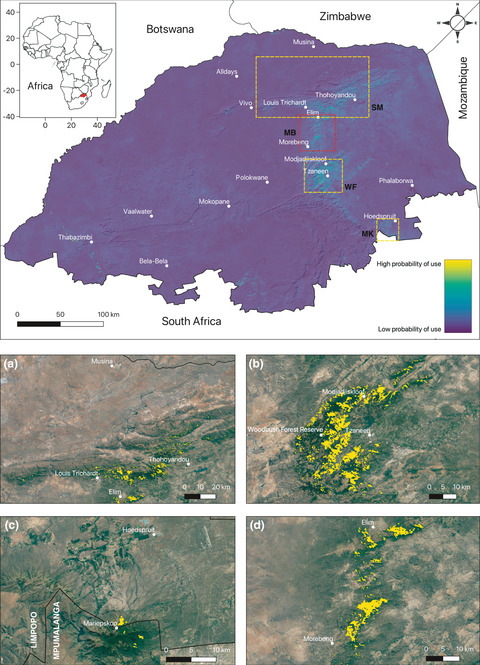
Identifying the landscape characteristics that influence species occurrence is a key conservation priority in order to prevent global biodiversity loss. We used samango monkey GPS locations over a 5-year study period to determine the habitat characteristics most important to their distribution at multiple scales. We found that habitat productivity was the most important landscape variable predicting probability of use at each scale of selection, and delineate the probability of samango monkey use across their known range in Limpopo Province, South Africa, accordingly.
Variation in developmental rates is not linked to environmental unpredictability in annual killifishes
- Pages: 8027-8037
- First Published: 12 May 2021
Isotopic niche variation in Tasmanian devils Sarcophilus harrisii with progression of devil facial tumor disease
- Pages: 8038-8053
- First Published: 06 June 2021
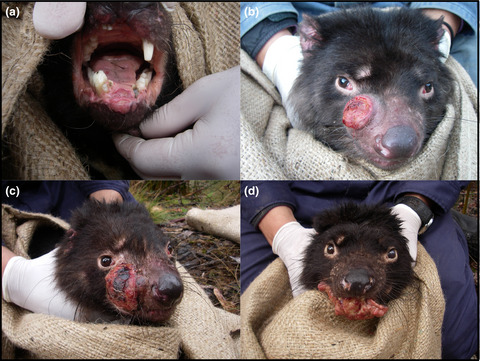
Tasmanian devils generally maintain their isotopic niche in the face of infection and progression of devil facial tumor disease. The exception was where ecological conditions facilitated a shift in diets and feeding behaviors, such as at Freycinet National Park. Ecological context, alongside disease severity, can modulate the behavioral responses of Tasmanian devils to DFTD.
Niche differentiation in a postglacial colonizer, the bank vole Clethrionomys glareolus
- Pages: 8054-8070
- First Published: 17 May 2021
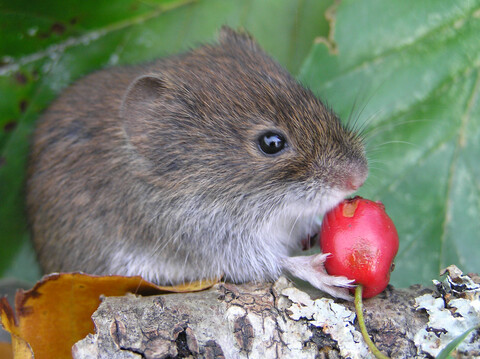
We explore whether phylogeographic lineages of the bank vole originating from different glacial refugia show environmental niche differentiation. We found that niches were significantly different between all pairs of lineages in geographic and environmental space and these differences cannot be explained by habitat availability within their respective ranges, suggesting that ecological differentiation has played a role in determining the present phylogeographic patterns in the bank vole.
Global change impacts on arid zone ecosystems: Seedling establishment processes are threatened by temperature and water stress
- Pages: 8071-8084
- First Published: 11 May 2021
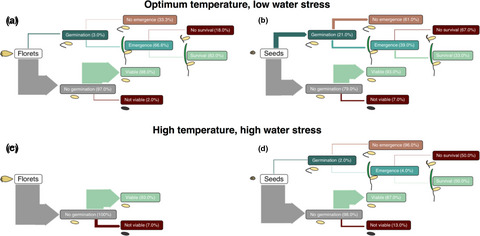
This study demonstrates different response envelopes for seed germination, seedling emergence, and the survival of seedlings and ungerminated seeds after exposure to climate factors associated with climate change. The findings show different thresholds limiting these processes and that seed dormancy is critical for regulating recruitment losses by limiting germination; however, ungerminated seeds are still at significant risk to viability loss. As such, seed bank losses may increase in response to increasing temperature and water stress through climate change.
Common spatial patterns of trees in various tropical forests: Small trees are associated with increased diversity at small spatial scales
- Pages: 8085-8095
- First Published: 27 May 2021
Gut microbiota are associated with sex and age of host: Evidence from semi-provisioned rhesus macaques in southwest Guangxi, China
- Pages: 8096-8122
- First Published: 14 May 2021
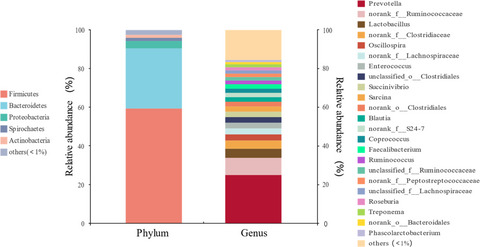
Sex and age were associated with differences in the diversity and relative abundance of gut microbiota in rhesus macaques. These differences could be linked to age- and sex-specific differences in nutrient requirements and hormone levels, highlighting the effects of age and sex on the structure and function of the gut microbiota, as well as the need to consider physiological traits when conducting gut microbiota studies.
Prevalence and intensity of avian malaria in a quail hybrid zone
- Pages: 8123-8135
- First Published: 19 May 2021
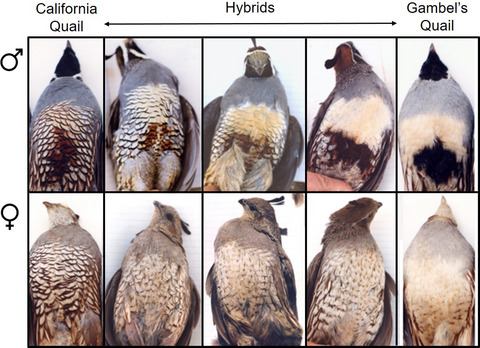
We examined infection patterns of the blood parasite Haemoproteus lophortyx, a causative agent of avian malaria, at a site in the contact zone between California quail (Callipepla californica) and Gambel's quail (C. gambelii). We found that California and hybrid quail had lower infection prevalence but higher infection intensities than Gambel's quail. Our results suggest that infection by H. lophortyx has the potential to influence species barrier dynamics in this system.
Many ways to make darker flies: Intra- and interspecific variation in Drosophila body pigmentation components
- Pages: 8136-8155
- First Published: 25 May 2021
Plant history and soil history jointly influence the selection environment for plant species in a long-term grassland biodiversity experiment
- Pages: 8156-8169
- First Published: 11 May 2021
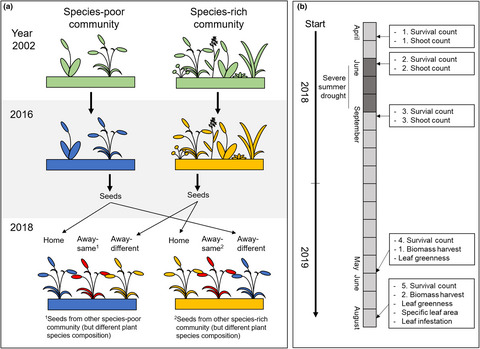
We performed a transplant experiment with offspring of seeds collected in 14-year-old plant communities differing in plant species richness. Our findings provide evidence that low and high plant diversity and associated differences in soil community and/or conditions differentially influence eco-evolutionary feedbacks of plants.
Thermal ecology and baseline energetic requirements of a large-bodied ectotherm suggest resilience to climate change
- Pages: 8170-8182
- First Published: 07 May 2021
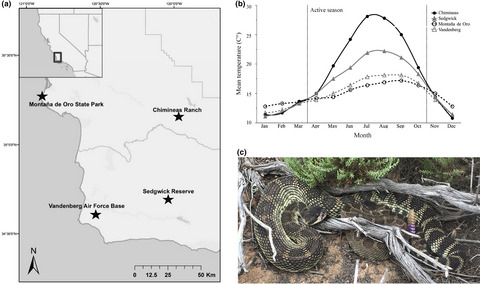
We used long-term thermal data collected from four populations of Pacific rattlesnakes (Crotalus oreganus) to determine and compare thermoregulatory metrics and maintenance energetic requirements of snakes living in climatically distinct habitats (coastal and inland). Thermal quality was best at coastal sites, but inland snakes thermoregulated more accurately despite being in more thermally constrained environments. Population differences in standard metabolic rate estimates were driven by body size rather than body temperature, with inland snakes requiring 1.6× more food annually than coastal snakes.
Seasonal patterns of spatial fidelity and temporal consistency in the distribution and movements of a migratory ungulate
- Pages: 8183-8200
- First Published: 14 May 2021
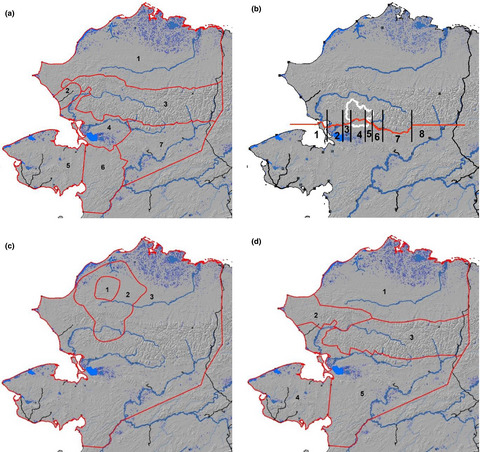
Fidelity to seasonal ranges was higher where there was greater environmental and resource predictability. Animals seek out these areas, but, once there, they would attenuate their selection likely due to interannual variation. Individuals may be able to locate and reuse patches of higher-quality habitat within these larger regions of low-resource predictability, increasing individual-level fidelity.
Transfer efficiency of carbon, nutrients, and polyunsaturated fatty acids in planktonic food webs under different environmental conditions
- Pages: 8201-8214
- First Published: 18 May 2021

The results of our study revealed that different essential substances (C, N, P, and polyunsaturated fatty acids) were transferred from phytoplankton to zooplankton with varying efficiencies. There were also large differences in TTEs between trophic conditions, with the highest efficiencies in oligotrophic lakes and the lowest in dystrophic and eutrophic lakes. Therefore, our study indicates that disturbances like eutrophication and dystrophication similarly decrease the TTE of essential substances between phytoplankton and zooplankton in freshwater food webs.
A dynamic history of admixture from Mediterranean and Carpathian glacial refugia drives genomic diversity in the bank vole
- Pages: 8215-8225
- First Published: 25 May 2021
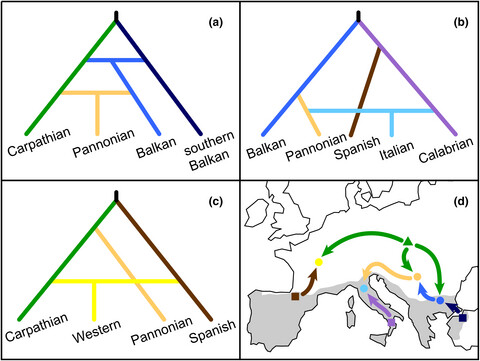
Previous mtDNA studies indicated that extra-Mediterranean refugia provided most of the genetic contributions in the bank vole (Clethrionomys glareolus) across its range, while Mediterranean peninsulas harbor isolated, endemic lineages. By analyzing an existing SNP dataset for more than 800 bank voles, we found striking evidence that both extra-Mediterranean (Carpathian) and Mediterranean (Spanish, Calabrian, and Balkan) refugia contributed to the ancestry and genomic diversity of populations across Europe. We suggest that the admixture from Mediterranean refugia may have facilitated the end-glacial spread of the admixed populations, contributing to increased bank vole diversity in central Europe.
Validating the use of stereo-video cameras to conduct remote measurements of sea turtles
- Pages: 8226-8237
- First Published: 26 May 2021
Looking for the needle in a downsized haystack: Whole-exome sequencing unravels genomic signals of climatic adaptation in Douglas-fir (Pseudotsuga menziesii)
- Pages: 8238-8253
- First Published: 17 May 2021
Automatic detection of fish and tracking of movement for ecology
- Pages: 8254-8263
- First Published: 18 May 2021
Disentangling demographic effects of red deer on chamois population dynamics
- Pages: 8264-8280
- First Published: 25 May 2021
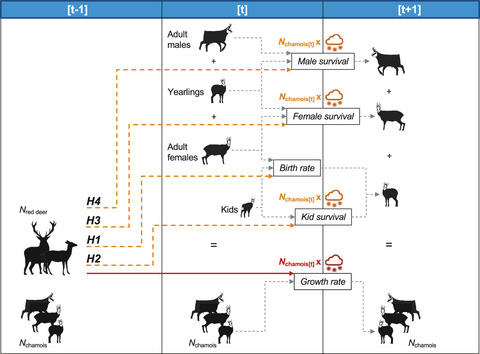
Understanding variation in key life-history traits requires to disentangle the impact of ecological variables on sex- and age-specific vital rates. Red deer Cervus elaphus can act as a potential competitor to the chamois Rupicapra rupicapra, hampering population growth rate. Our results support a strong negative effect of red deer abundance on chamois demographic parameters, thereby supporting the role of interspecific competition, especially on the kid–female segment of the population.
Environmental DNA metabarcoding primers for freshwater fish detection and quantification: In silico and in tanks
- Pages: 8281-8294
- First Published: 16 May 2021
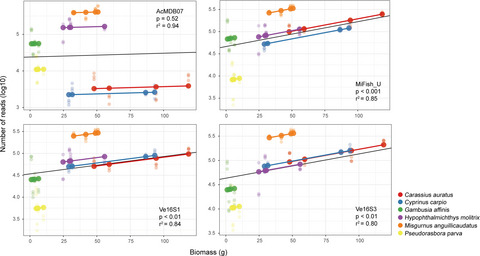
The maintenance of fish diversity is critical for aquatic ecosystem healthy, but in order to properly evaluate this, we must ensure that the tools used are properly evaluated and that we know how to identify problems or biases. As aquatic ecosystem management is a global issue, we feel that this research will have a broad audience in the world of freshwater and marine ecosystem research.
Body size and tree species composition determine variation in prey consumption in a forest-inhabiting generalist predator
- Pages: 8295-8309
- First Published: 20 May 2021
Phylogeographical analysis shows the need to protect the wild yaks' last refuge in Nepal
- Pages: 8310-8318
- First Published: 14 May 2021
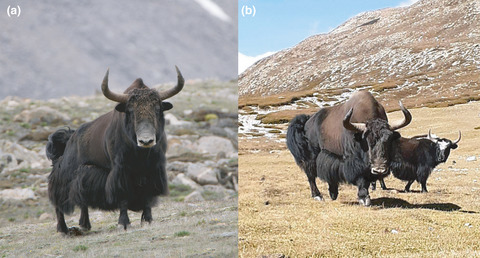
Our study carries a global relevance as it presents phylogenetic and haplotype network analyses of wild and domestic yak samples to reveal that the wild yaks in Humla, Nepal, share the haplotype with wild yaks from the north-western region of the Qinghai-Tibetan Plateau in China, providing validation to the wild yak rediscovery in Nepal that was based on morphology and behavior of the sighted animals. We also derive phylogeographical inference for the wild yaks in the Nepalese Transhimalayas and discuss their hybridization status while also outlining the conservation implications for the wild yaks that are critically endangered in the country.
Ant community composition and functional traits in new grassland strips within agricultural landscapes
- Pages: 8319-8331
- First Published: 25 May 2021
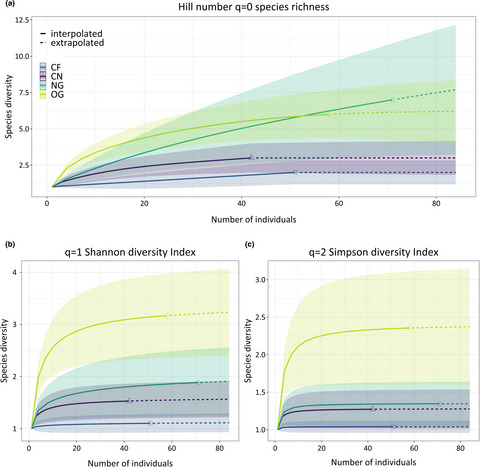
Newly established grasslands can increase ant species richness, abundance and provide a consistent amount of biocontrol services in agroecosystems. However, three years after their establishment, new grasslands were still dominated by common agrobiont ant species and lacked habitat specialists present in old grasslands, which require a constant supply of food resources and long colony establishment times. New grasslands represent a promising measure for enhancing agricultural landscapes but must be preserved in the longer term to promote biodiversity and resilience of associated ecosystem services.
Autumn larval cold tolerance does not predict the northern range limit of a widespread butterfly species
- Pages: 8332-8346
- First Published: 22 May 2021
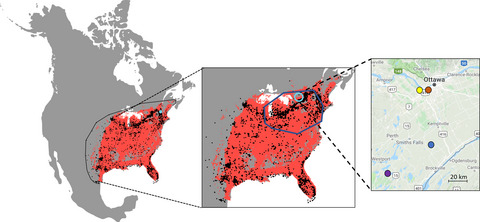
We integrate organismal thermal tolerance measures into broadscale species distribution models to test the critically important but untested hypothesis that low temperatures during autumn limit insect distribution. We do this using a widespread butterfly species, Papilio cresphontes, that is actively expanding its range northward. Results across approaches were consistent in rejecting the hypothesis that low temperatures during autumn limit the distribution of P. cresphontes. Instead, our modeling revealed that growing degree-days and precipitation best predict the distribution of P. cresphontes.
Alternative migratory tactics in brown trout (Salmo trutta) are underpinned by divergent regulation of metabolic but not neurological genes
- Pages: 8347-8362
- First Published: 02 June 2021
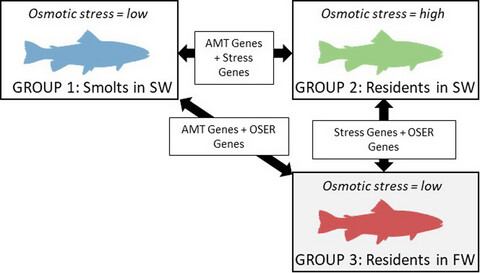
The occurrence of alternative morphs that differ in migratory tactics is common within populations, but the underlying molecular mechanisms remain poorly understood. Here, we used RNA-seq to identify genes in the brain and liver that differ in expression between migrants and residents of the facultatively anadromous brown trout (Salmo trutta). We identified clear differences in the liver, particularly for genes enriched for metabolic process-associated Gene Ontology terms, but not the brain, suggesting the importance of such genes in the regulation and expression of alternative migratory tactics.
Specific phytochemicals in floral nectar up-regulate genes involved in longevity regulation and xenobiotic metabolism, extending mosquito life span
- Pages: 8363-8380
- First Published: 25 May 2021
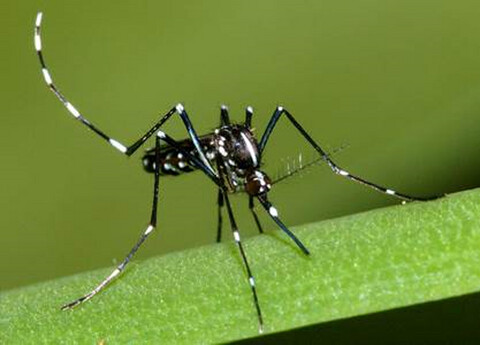
The study investigated the effects of nectar phytochemicals caffeine, p-coumaric acid, and quercetin on longevity, fecundity, and sugar-feeding behavior of female Aedes albopictus. Additionally, we did a whole-transcriptome analysis of female Ae. albopictus consuming sucrose diets supplemented with p-coumaric acid or quercetin to characterize their transcriptional profile. Quercetin and p-coumaric acid significantly enhanced the longevity of the mosquitoes while caffeine consumption resulted in reduced sugar feeding and enhanced fecundity. Dietary p-coumaric acid or quercetin led to a change in expression of genes associated with longevity regulation (superoxidase dismutase, heat shock proteins, and histones) and xenobiotic metabolism (P450s and other enzymes involved in degradation of toxins).
Complete mitochondrial genomes of three skippers in the tribe Aeromachini (Lepidoptera: Hesperiidae: Hesperiinae) and their phylogenetic implications
- Pages: 8381-8393
- First Published: 18 May 2021
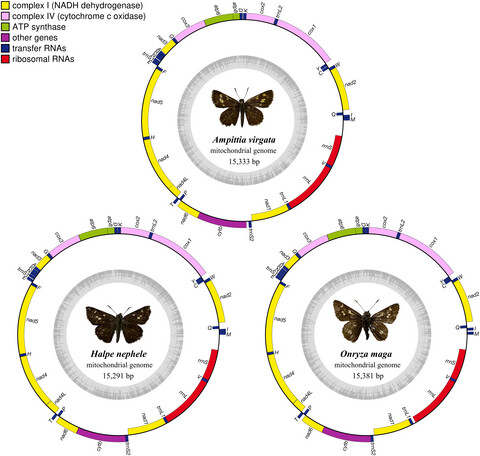
To explore the phylogenetic relationships of the tribe Aeromachini within the subfamily Hesperiinae at the mitochondrial genomics level, we sequenced and annotated the complete mitogenomes of three skippers: Ampittia virgata, Halpe nephele, and Onryza maga. Results show that the 3 Aeromachini species in this study robustly constitute a monophyletic group in the subfamily Hesperiinae, with the relationships Coeliadinae + (Euschemoninae + (Pyrginae + ((Eudaminae + Tagiadinae) + (Heteropterinae + ((Trapezitinae + Barcinae) + Hesperiinae))))). Moreover, our study supports the view that Apostictopterus fuliginosus and Barca bicolor should be placed out of the subfamily Hesperiinae.




